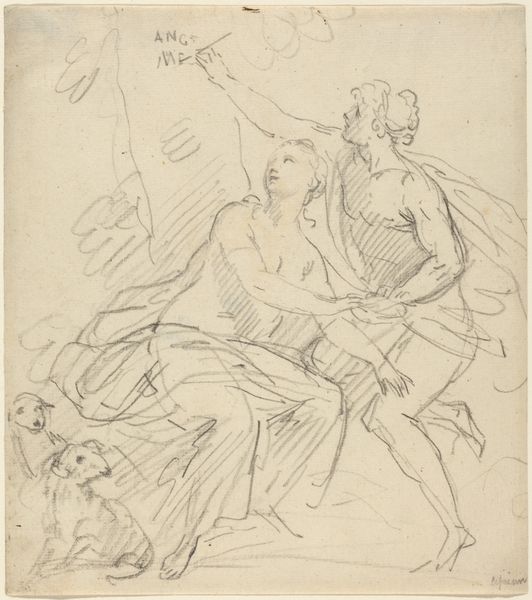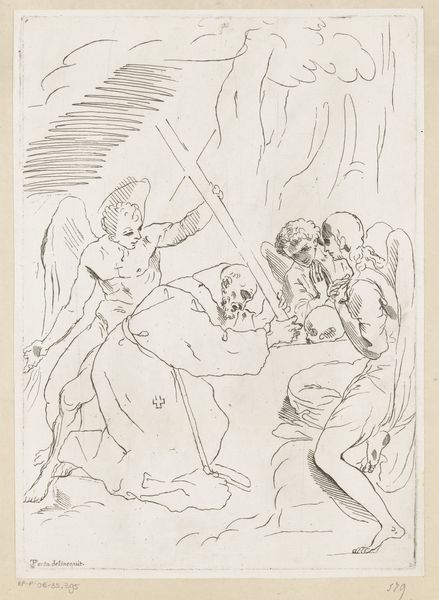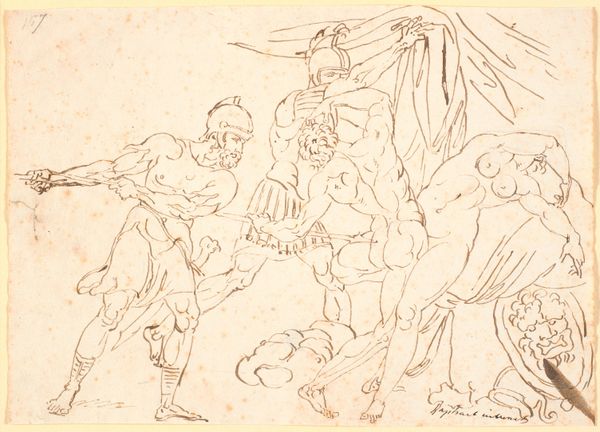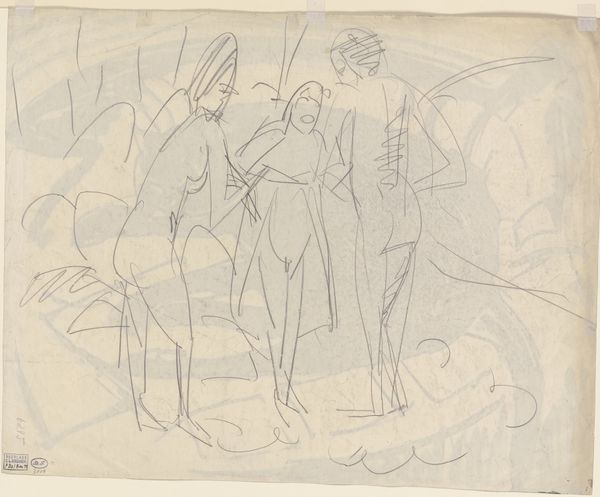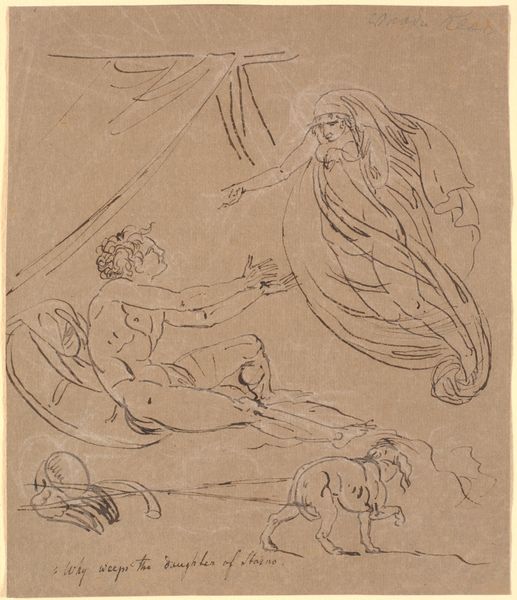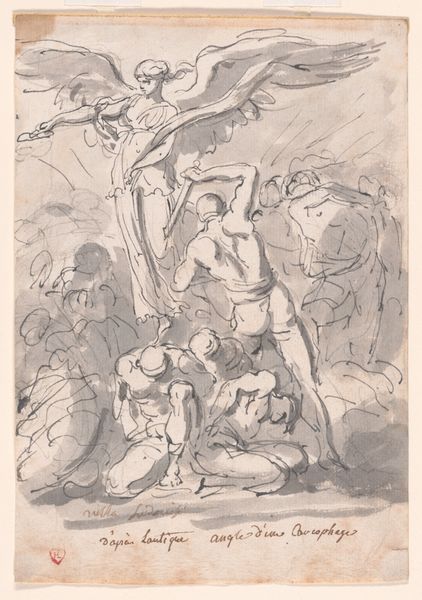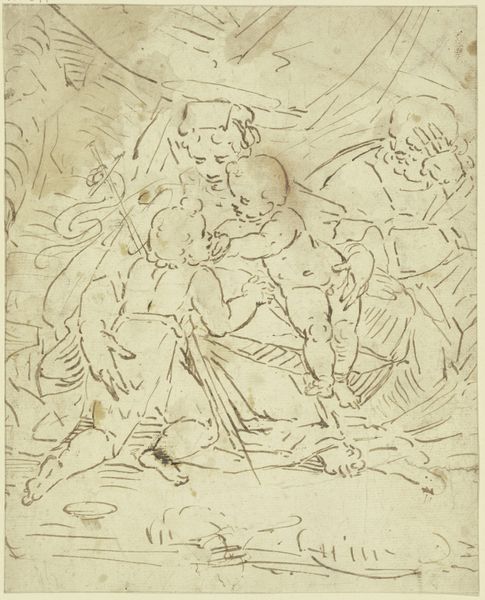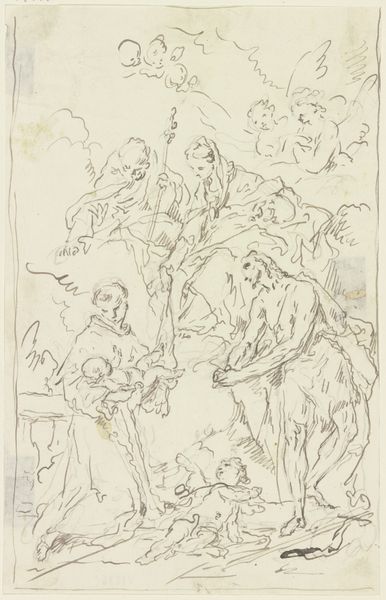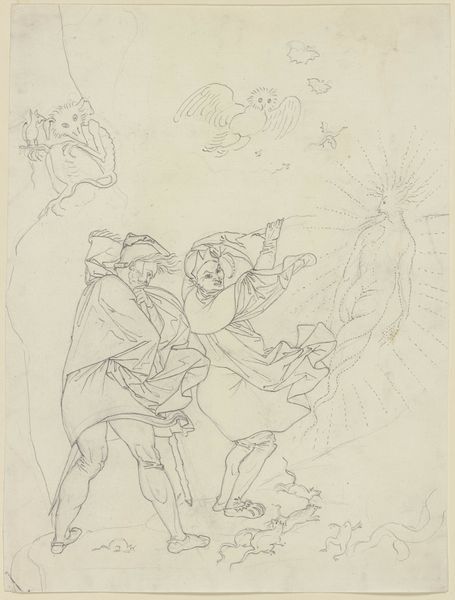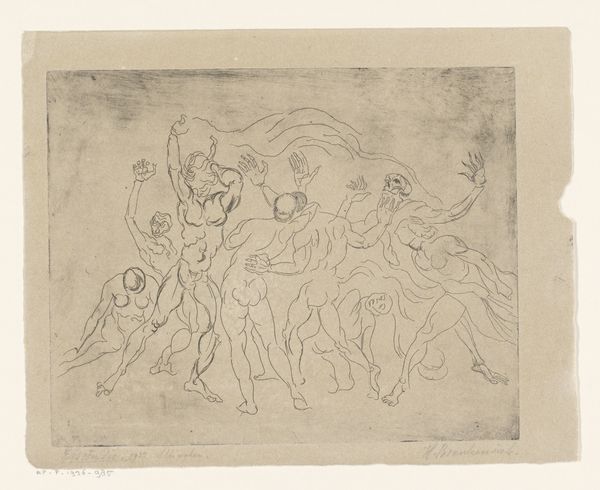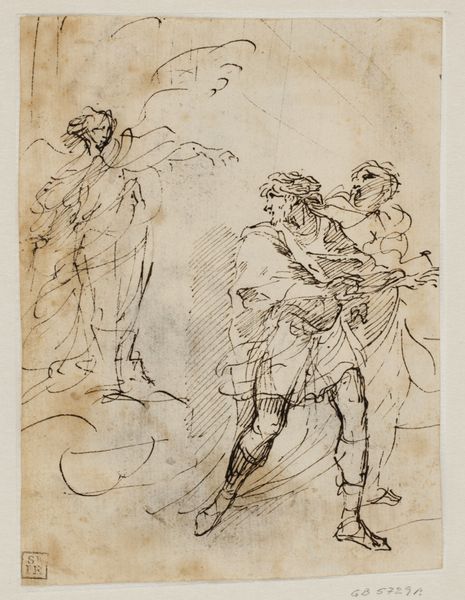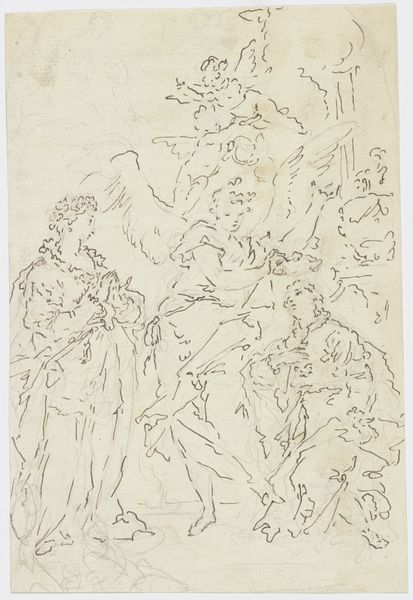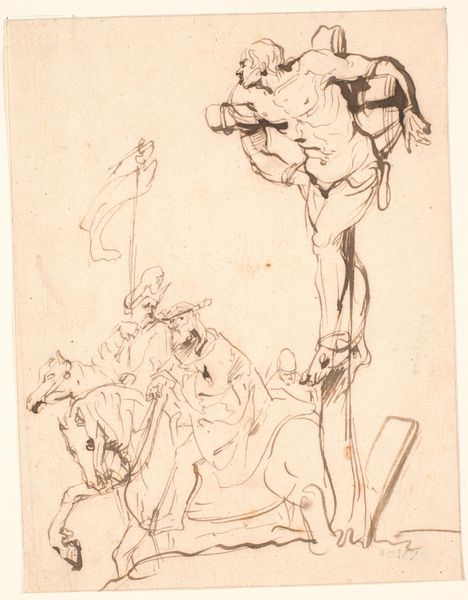
drawing, print, pencil, pen
#
drawing
#
neoclacissism
# print
#
pencil sketch
#
landscape
#
figuration
#
ancient-mediterranean
#
pencil
#
horse
#
men
#
pen
#
history-painting
#
academic-art
Dimensions: Sheet: 10 1/8 × 7 5/8 in. (25.7 × 19.3 cm)
Copyright: Public Domain
Curator: This pen and pencil drawing, aptly titled "Classical Military Subject," was created by William Hamilton between 1770 and 1780. It’s currently housed here at the Met. What are your initial thoughts? Editor: Raw, unfinished… you can see the artist's hand, the quick decisions, the tentative lines. There's an energy here that's quite compelling for something depicting a historical subject. The roughness of the work really emphasizes its materiality, doesn't it? Curator: Absolutely. And it's vital to consider Hamilton's place within the Neoclassical movement, where the intention was often to evoke the virtues of the ancient world. He seems to engage in dialogue between idealized classicism and something far rougher. Notice how the men's poses reference classical statuary. Editor: Yet the pencil strokes feel so… immediate, contrasting the lofty subject matter with something so humble, so easily erased and reworked. Makes you think about the labour, the drafting. It's not bronze, or marble, it’s lead on paper depicting figures burdened by… What are they burdened by? Curator: The expectations of empire, perhaps? Or even by our modern reading of it. Remember that Britain, at the time, was deeply invested in projecting power and emulating the Roman Empire. Hamilton wasn't just depicting soldiers; he was visualizing Britain's aspirational identity through art historical context. Editor: And what cost? A classical scene with unfinished sketch strokes. What does it say that the artist didn’t give a damn about this… or wasn’t supported well to provide a decent rendition with fine materials? Is it class? Social standing? Hamilton seems to hint at something behind all this, something imperfect, almost collapsing under its own weight. It reminds me how the means and modes of representation shape and limit perception. Curator: Fascinating! Considering his other paintings, I'd suggest this speaks more to process than commentary. Editor: A material record of a man at work; that's the most interesting layer of any work of art. Thanks for digging deeper into all this… I hadn’t seen past the simple rendition, but its social commentary offers more to discover. Curator: Precisely! It is also enlightening to realize that in this moment in history academic work still allowed process to take center stage, showing it raw in many cases, before a sense of hyperrealism pushed labor far backstage.
Comments
No comments
Be the first to comment and join the conversation on the ultimate creative platform.
